Coronation 12 January 1872 Role King | Name Yohannes IV | |
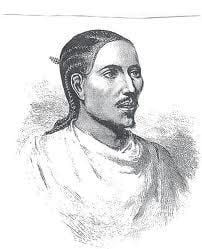 | ||
Reign 11 July 1871 – 10 March 1889 Spouse None (widowed before becoming Emperor) Issue Ras Araya SelassieRas Mengeshah House House of Solomon (Tigrean Branch) Children Ras Mengesha Yohannes, Araya Selassie Yohannes Similar People | ||
Yohannes IV (Geez ፬ኛ ዮሓንስ, Āratenya Yōḥānnis; 11 July 1837 – 10 March 1889), born Lij Kassay Mercha and contemporaneously also known in English as Johannes or John IV, was Emperor of Ethiopia from 1871 until his death in 1889.
Contents
- Biography of Yohannes IV Emperor of Ethiopia
- The National Palace of Emperor Yohannes IV Reopens for the Public
- Early life
- Rise to power
- War with Ottoman Egypt
- War with Sudan
- Death
- Descendants
- Araya Selassie Yohannes
- Mengesha Yohannes
- Legacy
- Full title
- References

Biography of Yohannes IV Emperor of Ethiopia
The National Palace of Emperor Yohannes IV Reopens for the Public
Early life
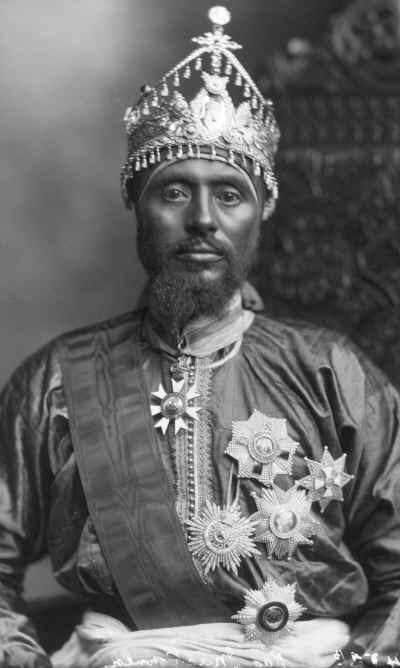
Yohannes IV was born at Mai-biha, a village then within the jurisdiction of Enderta province. He was the son of Mercha, Shum (or "governor") of Tembien, and his wife Woizero (or "Dame") Silass Dimtsu (Amata Selassie), who was the daughter of Dejazmach (roughly equivalent to "Duke") Dimtsu Debbab of Enderta the nephew of the powerful Ras Wolde Selassie of Enderta. Yohannes could claim Solomonic blood through the line of his paternal grandmother Woizero Workewoha KaleKristoss of Adwa, who was the granddaughter of Ras Mikael Sehul, and his wife Aster Iyasu, daughter of Empress Mentewab and her lover Melmal Iyasu. Yohannes could also claim Solomonic descent more distantly through his father's Tembien family, also through a female link to the dynasty. Amata Selassie's father Dimtsu of Endarta belonged to the family which in late 18th and early 19th centuries had held overlordship of Tigray, and her mother descended from the aristocratic line of the Shums of Agame.
Rise to power
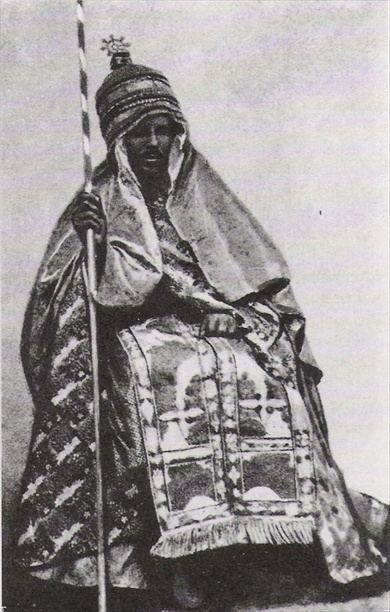
In 1868, at the time of Emperor Tewodros II's suicide in response to the British rescue mission under Sir Robert Napier, Dejazmach Kassai controlled the province of Tigray. With Tewodros's death, he became one of the three most powerful princes in Ethiopia along with Wagshum Gobeze of Lasta and Wag (the future Emperor Tekle Giyorgis II) and King Menelek of Shewa (the future Emperor Menelek II). Kassai was in fact Wagshum Gobeze's prodigy and ally: Wagshum had married his sister Dinqinesh Mercha and was instrumental in helping Kassai rise to power in Tigray. The British expedition had left Yohannes a great deal of ordnance, however, and Kassai refused to pay homage to Wagshum when he declared himself the emperor Tekle Giyorgis II at Sogota in Wag. At first Tekle Giyorgis attempted to mollify him by naming him Re-ese Mekwanint ("first among the nobles"): Kassai promptly began using the title but continued to dispute Tekle Giyorgis's right to supremacy or homage.
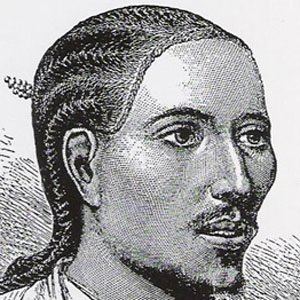
Kassai was aided in his defiance by the recent death of Salama, the abuna of the Ethiopian Church: Tekle Giyorgis could not be formally crowned until his replacement was appointed by the Coptic Pope in Cairo, a process which might take years. In fact, Kassai took the initiative: he had gathered the funds to pay Pope Cyril for the ordination and travel of the new archbishop. Abuna Atnatewos arrived by June 1869, but took Kassai's side in the dispute. After consolidating support with Adal of Gojjam and Menelik of Shewa through marriage and pacifying Wollo through force, he invaded Tigray across the Takazze River in 1871. Dejazmach Kassai met the Emperor near Adwa on 11 July 1871, capturing and deposing him. The "emperor" died in captivity the next year. Following Tekle Giyorgis' death, his widow settled in Mekelle at Yohannes's court, continuing to be accorded the title and dignity of an Empress throughout his reign.

Atnatewos crowned Kassai emperor at Axum. The exact date of his crowning is not very clear and there are three different dates given by scholars: 12 January 28 January, and 12 February 1872. In addition, in one of the Emperor's letters to the Queen of England, he states that he assumed power in November. He took the name and title of Emperor, becoming the first emperor crowned in Axum since Fasilides in 1632. Adal of Gojjam soon after submitted to Yohannes and recognized him as Emperor. Adal was rewarded with the titles of Ras and of King (Negus) of Gojjam. Adal was also given the new name of Tekle Haymanot Tessemma.
War with Ottoman Egypt
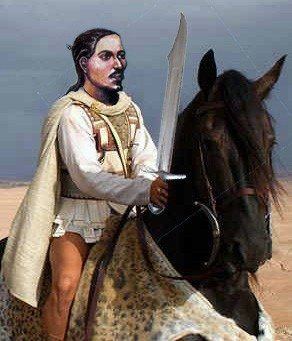
Throughout his reign, Yohannes was embroiled in military struggles on his northern frontiers. First was from Khedive Isma'il Pasha of Egypt, who sought to bring the entire Nile River basin under his rule. The Egyptians flirted with encouraging Menelik of Shewa against the Emperor, but earned Menelik's enmity by marching from the port of Zeila and occupying the city-state of Harar on 11 October 1875. Both Menelik and Yohannes had regarded Harar as a renegade province of Ethiopia, and Egyptian seizure of the Emirate was not welcome to either of them. The Egyptians then marched into northern Ethiopia from their coastal possessions around the port of Massawa. Yohannes pleaded with the British to stop their Egyptian allies, and even withdrew from his own territory in order to show the Europeans that he was the wronged party and that the Khedive was the aggressor. However, Yohannes soon realized that the Europeans would not stop the Khedive of Egypt and so he gathered up his armies and marched to meet the Egyptian force.

The two armies met at Gundat (also called Guda-gude) on the morning of 16 November 1875. The Egyptians were tricked into marching into a narrow and steep valley and were wiped out by Ethiopian gunners surrounding the valley from the surrounding mountains. Virtually the entire Egyptian force, along with its many officers of European and North American background, were killed. News of this huge defeat was suppressed in Egypt for fear that it would undermine the government of the Khedive. A new Egyptian force was assembled and sent to avenge the defeat at Gundat. The Egyptians were defeated again at the Battle of Gura (7–9 March 1876), where the Ethiopians were led again by the Emperor, and his loyal general, the capable (and future Ras) Alula Engida. This victory was followed by Menelik's submission to Yohannes on 20 March 1878, and in return Yohannes recognized Menelik's hereditary right to the title of King (Negus) of Shewa, and re-crowned him on 26 March. Yohannes took this opportunity to tie the Shewan King more closely to him by arranging for Menelik's daughter Zewditu (the future Empress of Ethiopia in her own right), to be married to his own son and heir, Ras Araya Selassie.
Emperor Yohannes also convened a general council of the Ethiopian Church at Boru Meda later in 1878, which brought an end to the ongoing theological dispute in the local church; Christians, Muslims and pagans were given respectively two, three and five years to conform to the council's decisions. Non-Christians were forbidden from participating in the government unless they converted and were baptised; the Muslims were given three months, while the pagans had to become Christians immediately. "Having concluded that Wollo was worth a mass," as Harold Marcus wryly puts it, his retainer Ras Mohammed of Wollo became disobedient of the tax rules, which he and the entire wollo refused to pay tax to the government in which Emperor Yohannes had discovered, Ras Mohammed was conspiring with the Turks the Ottoman empire because of his Muslim affiliation. Ras Mohammed was brought to Emperor Yohannes, and was confronted of his conspiracy in helping the Muslim colonizer and to bring down the Judeo Christian empire. Ras Mohammed was siding with Muslim Affiliates of Turkey. After meeting with King Yohannes and in learning that if he were to assist the Turks in the end he and the rest of Ethiopia would become a salve to the Arab/Muslim world. Ras Mohammed then choose to become a Christian to later inherit a Christian name (later Negus) Mikael of Wollo, the Emperor stood as his godfather at his baptism. The new convert was given Menelik of Shewa's other daughter, Shewarega Menelik, as his wife. Yohannes went one step further and pressured Menelik to expel all of the Roman Catholic missionaries from Shewa.
However this time, instead of a single Archbishop, he requested that Patriarch Cyril send four to serve the large number of Christians in Ethiopia, who arrived in 1881. They were led by Abuna Petros as Archbishop, Abuna Matewos for Shewa, Abuna Luqas for Gojjam and Abuna Markos for Gondar. Abuna Markos died shortly after arriving, so his diocese was included with that of Abuna Atnatewos. It was the first time that the Coptic Patriarch of Alexandria had appointed four Bishops for Ethiopia.
War with Sudan
When Muhammad Ahmad proclaimed himself the Mahdi, and incited Sudan into a long and violent revolt, his followers successfully either drove the Egyptian garrisons out of Sudan, or isolated them at Suakin and at various posts in the south. Yohannes agreed to British requests to allow these Egyptian soldiers to evacuate through his lands, with the understanding that the British Empire would then support his claims on important ports like Massawa on the Red Sea to import weapons and ammunition, in the event that Egypt were forced to withdraw from them. This was formalized in a treaty signed with the British at Adwa known as the Hewett Treaty. The immediate result was that the wrath of the Mahdiyah fell upon Ethiopia: Ras Alula defeated an invading Mahdist army at the Battle of Kufit on 23 September 1885. About the same time, Italy took control of the port of Massawa, frustrating Ethiopian hopes and angering Yohannes. Yohannes attempted to work out some kind of understanding with the Italians, so he could turn his attention to the more pressing problem of the Mahdists, although Ras Alula took it upon himself to attack Italian units that were on both sides of the ill-defined frontier between the two powers. Domestic problems increased when the Neguses of both Gojjam and Shewa rebelled against Yohannes, and the Emperor had to turn his attention from the encroaching Italians to deal with his rebellious vassals. Yohannes brutally crushed the Gojjame rebellion, but before he could turn his attention to Shewa news arrived that the Mahdist forces had sacked Gondar and burned its holy churches. He marched north from Gojjam to confront the armies of the Mahdi.
Death
Evidence suggests that Emperor Yohannes had acted rashly and had made himself vulnerable, going beyond enemy lines in range of enemy shots as victory was going to his side. Mortally wounded from a gunshot, he had been carried to his tent, where he announced that his nephew Ras Mengesha was actually his natural son, and named him his heir (his elder son Ras Araya Selassie had died a few years earlier). He died hours later. Although the Ethiopian army had almost annihilated their opponents in this battle, hearing that their ruler had been slain shattered their morale and allowed the Mahdists to counterattack, scattering the Ethiopian forces.
Yohannes' body was carried back to Tigray guarded by a small party, who were overtaken by the Mahdist troops of Zeki Tummal near the Atbara River and who captured the sovereign's body. Augustus B. Wylde, who claimed to have heard the story from a priest who managed to escape the slaughter, wrote how Yohannes' uncle Ras Areya stood beside the body of his dead master with "a few of his soldiers and the bravest of the king's servants, who had lost their all, and had no more prospects to live for".
Ras Areya was last seen standing alongside the box containing the king's body, after having expended all his ammunition, with his shield and sword in his hands, defending himself, till at last he was speared by a Dervish from behind, and died fighting gamely like the fine old warrior that he was.According to Wylde, as he saw death come Ras Areya announced "that he was now old and done for, that his time had come, and it was useless at his age to serve another master that he knew little about, and it was better to die like a man fighting unbelievers, than like a mule in a stable." The Mahdists brought the Emperor's body back to their capital at Omdurman, where the head was put on a pike and paraded through the streets.
Descendants
Although a group of Tigrean nobles led by Ras Alula attempted to promote the claim of Ras Mengesha Yohannes (the "natural" son of Yohannes) as Emperor, many of the dead monarch's other relatives on both the Enderta and Tembien sides of his family objected and went into open rebellion against Mengesha. Many refused to accept Ras Mengesha as the son of Yohannes, having long known him as his nephew. Tigray was torn assunder by the rebellions of various members of the Emperor's family against Mengesha and each other. Menelik of Shewa took advantage of Tigrean disorder, and after the Italians occupied Hamasien, (a district Yohannes IV had bestowed upon Ras Alula) he was proclaimed Emperor of Ethiopia as Menelik II. The death of Yohannes reduced the influence of Tigrayans in the Ethiopian government and opened the way for Italians to occupy more districts previously held by Tigrayan nobles. The seizures made by the Italians at this time ultimately resulted in the creation of the colony of Eritrea and the defeat of Italy at the Battle of Adwa at the hands of Emperor Menelik II. The Tigrean nobility retained influence at the Imperial court of Menelik and his successors, although not at the level they enjoyed under Yohannes IV. The descendants of Yohannes ruled over Tigray as hereditary Princes until the Ethiopian Revolution and the fall of the monarchy in 1974 ended their rule.
Araya Selassie Yohannes
There are two lines of descent from Yohannes IV, one "legitimate" and one "natural." The legitimate line is through his elder son, Ras Araya Selassie Yohannes. Araya Selassie Yohannes was born by his wife Wolete Selassie. The son of Araya Selassie Yohannes was Ras Gugsa Araya Selassie. His son was the infamous Dejazmach Haile Selassie Gugsa who governed eastern Tigray in the 1930s and was married to Emperor Haile Selassie's daughter Princess Zenebework Haile Selassie. However, following the death of his wife, Dejazmatch Haile Selassie Gugsa's relationship with Emperor Haile Selassie deteriorated, and in 1936, Dejazmatch Haile Selassie became the first high-ranking Ethiopian nobleman to defect to the Italians when the Fascist forces invaded Ethiopia. The people of Mek'ele ransacked his house when this news was revealed. He was elevated to the title of Ras by the King of Italy. However, following the liberation of Ethiopia in 1941, Haile Selassie Gugsa was placed under house arrest and regarded as a traitor. Emperor Haile Selassie refused to acknowledge the title of Ras granted to his former son-in-law by the King of Italy, and so he reverted to the title of Dejazmatch. He was freed by the Derg regime in 1974 following the fall of the monarchy. He died shortly thereafter. There are other descendants of Emperor Yohannes IV in this "legitimate" line, but because of the wartime actions of Dejazmatch Haile Selassie Gugsa, this branch of the family fell into disfavor at the Imperial court and lost its position and influence.
Mengesha Yohannes
The second, "natural" line is through Ras Mengesha Yohannes and is the better-known line. Although Ras Mengesha Yohannes ended his days under house arrest for his repeated rebelling against Emperor Menelik II. Ras Mengesha's son Ras Seyoum Mengesha first became governor of western Tigray, and following the treason of his cousin Dejazmatch Haile Selassie Gugsa, became Governor (Shum) of all of Tigray in 1936. He commanded troops against the Italians, but was forced to surrender and spent most of the Italian occupation under house arrest in Addis Ababa. Following the return of Emperor Haile Selassie in 1941, Ras Seyoum was restored to his governorate of Tigray, recognized as the hereditary Prince of that province. Ras Seyoum Mengesha was killed during the abortive coup by the Imperial Bodyguard in 1960, and was succeeded by his son Ras Mengesha Seyoum who served as Governor and hereditary Prince of Tigray until the 1974 Revolution toppled the Ethiopian monarchy. Ras Mengesha Seyoum is married to Princess Aida Desta, a granddaughter of Emperor Haile Selassie and is the current head of the Tigrean branch of the Solomonic dynasty. Mengesha Seyum is the last person alive today who bears the title of Leul Ras.
Legacy
Yohannes undoubtedly had his weakness, but mostly they were not his own making, but imposed on him either by external pressure or inherited by his deep-seated values and traditional norms. During the eighteen years of his reign, he was preoccupied, most of the time, defending his country against external aggressions perpetrated by the Egyptians, the Italians and the Mahdists. Yohannes succeed to a large extent to pacify the country and to expand the empire by the device of power sharing and accommodation guiding principle of his administration were patience, tolerance, and forgiveness, as well as a tendency to preserve the status quo. Above all, his concern was focused on promoting peace the external threats rather than promoting his own personal or dynastic gain.
The way he shared his authority with Menelik and Tekle Haymanot undoubtedly resulted eventually in undermining his own authority, but it contributed greatly in accelerating the process of reunification of the Ethiopian Empire. By preserving the status quo in the regional administration, the uncertainty and fear, which permeated under previous reigns due to constant changes, were reduced. The self-confidence and charitable attitude, which he displayed toward his vanquished enemies or rivals, earned him the administration and high esteem of his subjects.
Early in his career after he defeated and seized Dejazmatch Gabre Mikael of Tsrae, who was responsible for the death of his own mother Woizero Silas Dimtsu, not only did he forgive him, but within a year, Gabre Mikael was reinstated as councilor and appeared as one of the important dignitaries during the mission of Major Grant to Adwa, in February 1868. Subsequently, Gabre Mikael's son, Dejazmach Birru, also held important posts. Ras Adal of Gojjam, after he killed his own cousin, Ras Desta Tedla Guala, the newly appointed governor by Yohannes and submitted to Yohannes and asked for forgiveness, not only was he forgiven but he was given the command over Gojjam and eventually elevated as King of Gojjam and Kefa, under the name of Tekle Haymanot.
King Menelik's ambition to seize the imperial crown was clearly evident since his escape from Mäqdalä and return to Shoa, in 1865. The submission of Menelik to Yohannes was not effected until 1878 after Yohannes gained substantial advantage over his rivals in terms of quality and quantity of firearms as a result of the booty gathered in his successive victories over the Egyptian army at Gundet Gurae, in 1875 and 1876, respectively. This advantage remained on Yohannes's side throughout his reign. Despite a repeated pressure from his advisers on two occasions, in 1878, at the time of Menelik's submission and in 1881, after his two vassal kings, Menelik and Teklé Haymanot fought against each other at Embabo, to remove Menelik and replace him if need be, by one of his cousins, such as Meshesha Seifu, Yohannes refused to yield on grounds that he was not going to destroy an effective power, which Menelik diligently built up for the sake of eliminating a possible threat to himself.Finally, Yohannes heard that both his vassal kings have defected and during his campaign in Gojjam, Tekle Haymant confessed that they had concluded an agreement to help one another and rebel against the authority of the Emperor. At this juncture, the temptation was great to cross the Abbay River to Showan territory and eliminate the internal threat. Yohannes's priority, however, was to avert the external threat and he decided to face the Mahdists who had penetrated twice as far as Gonder and burnt the churches, pillaged the country, and enslaved people.
Throughout his reign, Yohannes demonstrated selfless devotion to the defense of the territorial integrity of Ethiopian Empire against successive waves of external aggression, by Egyptians, Italians, and Mahdists Sudan. He also strove within the parameters of what was possible in his day to promote the welfare of his people. His devotion to his country and people culminated in the supreme sacrifice of his life at the border of his empire, in the Battle of Metemma.
Full title
His full title was "His Imperial Majesty John IV, Conquering Lion of the Tribe of Judah, King of Zion, King of Kings of Ethiopia and Elect of God" or in Ethiopian "Ge'ez [sic] girmāwī, mō'ā 'anbassā za'imnaggada yīhūda, nigūsa TSion, nigūsa nagast za'ītyōṗṗyā, siyūma 'igzī'a'bihēr)".
